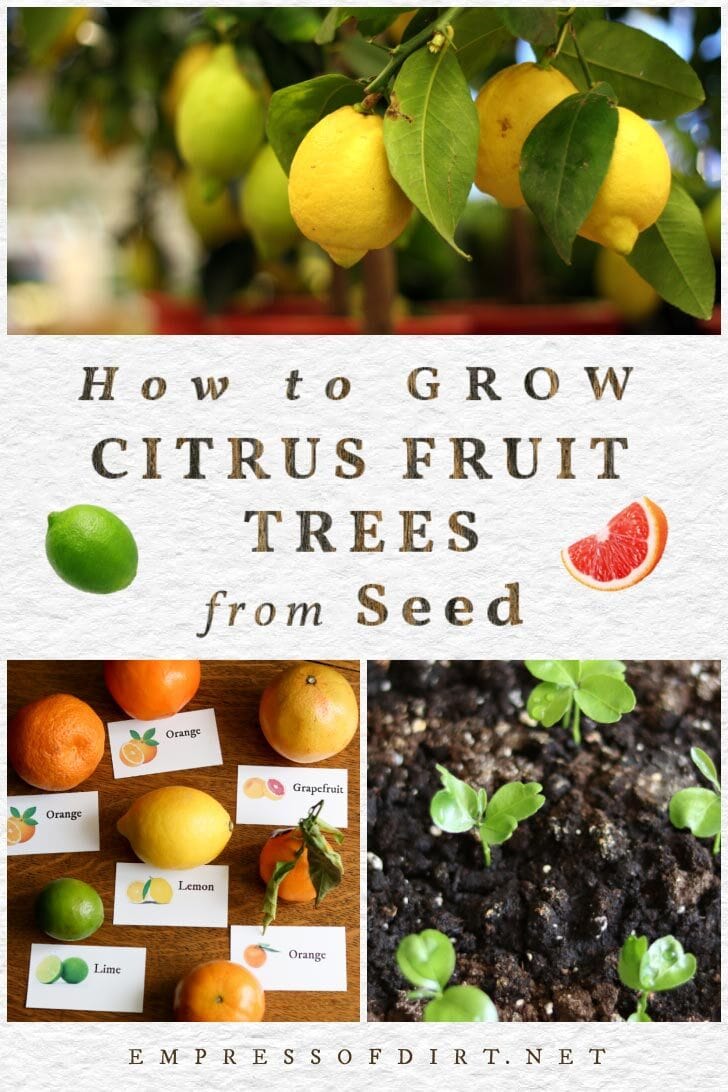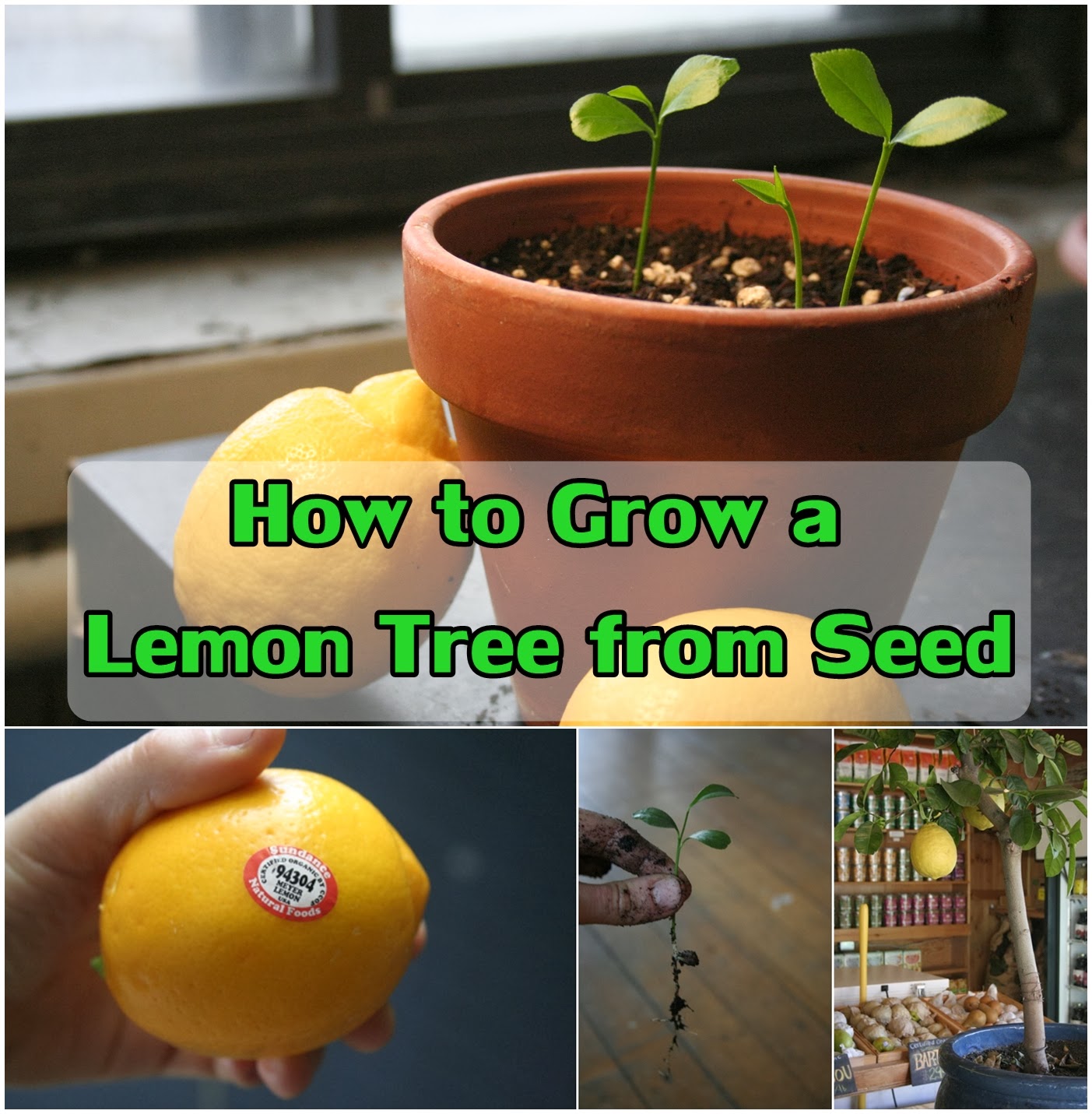How To Grow Citrus From Seed

Imagine the burst of sunshine as you peel open a juicy mandarin, its bright aroma filling the air. Now, picture nurturing that simple pleasure from a tiny seed into a thriving citrus tree, a testament to patience and the magic of nature. It sounds idyllic, doesn't it?
This isn't just a whimsical fantasy; it's a tangible possibility for anyone with a sunny windowsill, a little patience, and a desire to cultivate their own slice of citrus paradise. Growing citrus from seed is a rewarding journey, offering a unique connection to the plant world and the satisfaction of nurturing life from its very beginning.
While it may take a little longer to bear fruit compared to grafting, the process itself is an enriching experience. This article guides you through the ins and outs of growing citrus from seed, from choosing the right variety to caring for your seedling as it blossoms into a flourishing tree.
Why Grow Citrus From Seed?
While purchasing a grafted citrus tree from a nursery might offer quicker fruit production, growing from seed offers a distinct set of advantages. It’s a cost-effective way to expand your garden and a fascinating experiment in botany. The sheer joy of watching a tiny seed sprout and grow into a vibrant plant is unmatched.
Seed-grown citrus often develops a stronger root system, making it more resilient to environmental stresses. This can translate to a healthier, longer-lived tree in the long run. Plus, you might even discover a unique citrus variety – a delightful surprise that only seed propagation can offer!
Choosing Your Citrus Champion
Not all citrus seeds are created equal. Some varieties are more likely to produce viable seedlings than others. Consider focusing on seeds from readily available and generally polyembryonic citrus fruits such as mandarins, oranges, lemons, limes, and grapefruits.
Polyembryonic seeds contain multiple embryos, meaning that some seedlings will be clones of the parent tree, ensuring fruit characteristics similar to the original. Monoembryonic seeds, on the other hand, result in offspring that are hybrids and may not produce desirable fruit. According to the University of California, Riverside Citrus Variety Collection, citrus varieties like 'Cleopatra' mandarin and 'Volkamer' lemon are known for their high polyembryony rates.
When selecting your fruit, choose those that are fully ripe and free from blemishes. The fresher the seeds, the higher the germination rate. The seeds should be plump and healthy-looking. Avoid shriveled or discolored seeds.
The Germination Gauntlet
Once you've chosen your citrus fruit, carefully extract the seeds. Rinse them thoroughly to remove any pulp or sugar residue. This will prevent mold growth and improve germination rates.
A simple method for germination involves wrapping the seeds in a moist paper towel. Place the towel inside a plastic bag and store it in a warm location (around 70-75°F or 21-24°C). Check the towel regularly and mist with water to keep it consistently moist, but not soggy.
Another option is to directly sow the seeds into small pots filled with a well-draining seed-starting mix. Plant the seeds about half an inch deep and water gently. Cover the pots with plastic wrap to maintain humidity and place them in a warm, bright location.
Germination typically takes anywhere from one to two weeks, but some seeds may take longer. Patience is key! Once the seedlings emerge, remove the plastic wrap and provide them with plenty of bright, indirect sunlight.
Nurturing Your Seedlings
As your citrus seedlings grow, they will require consistent care to thrive. Water them regularly, allowing the soil to dry slightly between waterings. Avoid overwatering, as this can lead to root rot.
Fertilize your seedlings every two to three weeks with a diluted solution of balanced liquid fertilizer, according to the fertilizer instructions. A fertilizer formulated for citrus plants is even better. Remember, less is more when it comes to fertilizer, especially for young seedlings.
Provide your seedlings with plenty of bright, indirect sunlight. A south-facing window is ideal. Rotate the pots regularly to ensure even growth. As the seedlings grow larger, you may need to transplant them into bigger pots.
Choosing the right soil is critical. A well-draining potting mix specifically designed for citrus or acid-loving plants is ideal. This type of mix will provide the proper pH and nutrients for healthy growth. Adding perlite or vermiculite to the mix will improve drainage.
Citrus trees thrive in slightly acidic soil. Regular soil testing can help you monitor the pH levels and adjust as needed. Experts at the University of Florida IFAS Extension recommend a soil pH between 6.0 and 7.0 for optimal citrus growth.
Pest Patrol
Keep a close eye on your seedlings for any signs of pests or diseases. Common citrus pests include aphids, spider mites, and scale insects. Treat infestations promptly with insecticidal soap or neem oil, following the product instructions carefully.
Good air circulation is crucial for preventing fungal diseases. Avoid overcrowding your plants and provide adequate ventilation. If you notice any signs of disease, such as leaf spots or powdery mildew, treat them promptly with an appropriate fungicide.
The Long Wait for Fruit
One crucial point to remember: citrus trees grown from seed can take several years to bear fruit. Depending on the variety, it could take anywhere from 3 to 15 years before you see your first blossom. This is where the patience truly comes into play.
However, the journey itself is part of the reward. You'll witness the slow but steady growth of your tree, developing a deep appreciation for the plant world. And when that first fruit finally appears, the sense of accomplishment will be immeasurable.
The Grafting Option
If you're impatient for fruit, you can consider grafting a cutting from a known fruiting variety onto your seedling's rootstock. Grafting essentially combines the desirable fruit characteristics of one tree with the strong root system of another. This can significantly shorten the time it takes for your tree to bear fruit.
Grafting requires some skill and practice, but there are many online resources and workshops available to help you learn the technique. A successful graft can result in a tree that produces fruit within a couple of years.
Overwintering Your Citrus
In colder climates, citrus trees need protection from frost and freezing temperatures. If you live in an area with harsh winters, consider growing your citrus tree in a pot so you can bring it indoors during the colder months.
Provide your indoor citrus tree with as much bright, indirect sunlight as possible. Supplement with grow lights if necessary. Keep the soil consistently moist, but avoid overwatering. Maintain a moderate humidity level by misting the leaves regularly or using a humidifier.
A Labor of Love
Growing citrus from seed is a labor of love, a testament to patience, and a connection to the natural world. It demands perseverance, a willingness to learn, and an appreciation for the slow, steady rhythm of nature.
While the wait for fruit may be long, the journey is filled with small victories – the emergence of a seedling, the unfurling of a new leaf, the steady growth of your tree. Each milestone is a reminder of the incredible power of nature and your own ability to nurture life.
So, the next time you enjoy a juicy piece of citrus, save the seeds and embark on this rewarding adventure. You might be surprised at what you can grow, and the profound sense of satisfaction that comes with it. Remember, you are not just growing a tree; you are cultivating a connection to nature and a legacy for the future.


















